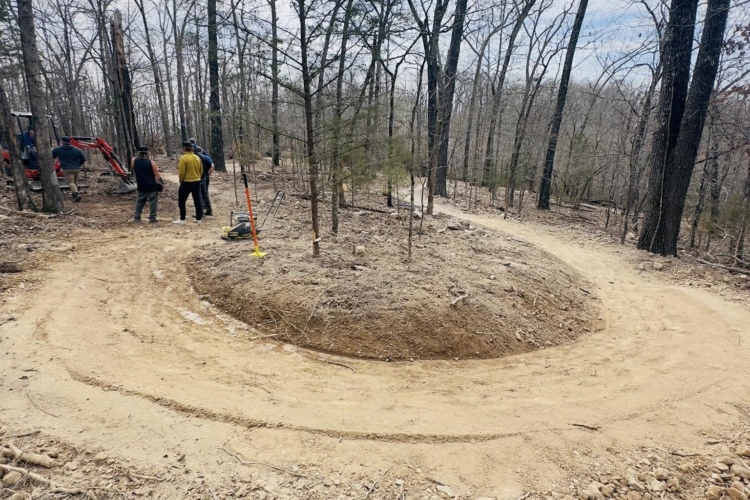It was a long time coming, but I finally gathered all the components I needed to build up my DH rig for the up-and-coming season! Shimano sent over their most anticipated (and affordable) new component group: ZEE. For those who aren’t in the know, the ZEE group is Shimano’s answer for the general gravity masses who are not elite riders. For many people who are sitting on the fence about purchasing a gravity-oriented bike, cost is a major barrier that usually stops those purchases in their tracks. Well, excellent quality and great performance are now available at an affordable price!
The new ZEE (M640/645) group consists of crank, rear derailleur, front and rear hubs, brakes, and rear shifter only. It’s a pretty sold offering with little else to source. All you need to finish off the group is a 10spd chain and cassette. A chain such as Shimano’s own HG series (94,75,54), or one from another brand, works. I ended up using the HG-94 chain matched to a CS-6700 (11-25 Ultegra) cassette for the winter ZEE build project bike.
The quality of workmanship in the ZEE group is readily apparent: all the parts have a high-quality finish to them. Looking at the hub, you can see this unit is center-lock only. Considering wheel options, you only have a 20mm hub choice in the back–the rear axle options include 135/10, 135/12, 150/12 and 142/12 (and 32 or 36 spoke count). Lacing them up to a set of Spank Spike Race EVO 28 rims with DT-Swiss spokes and alloy nipples was a breeze. I am running the Ice-Tech SM-RT81’s (203F, 180R), but they can be upgraded to the Ice-Technology SM-RT99’s.
What I found most impressive was the new brakes. Think of these as a new version of the Saint, then take away a bit of fancy machining off the lever, remove the free stroke adjustment, and you pretty much have a ZEE brake. In fact, the ZEE keeps the new 3-layer BH-90 hose.
You also have a choice of brake pad material; I choose to go with the metallic pads. Once I get more time in on the bike, I will let you all know how things go… err, in this case, stop.
Installation
On an installation note, the single-bolt split pivot design on the brakes is great. The ZEE has a hidden pin that, once depressed, allows the pivot to swing open, and the brakes to be removed.
Installation takes a good 2-3 hours at a shop. At home, I would say don’t attempt it unless you have all the tools necessary for a complete group install. In order to accomplish a full install you would need:
- 2,3,4,5,6,8,10mm hex keys
- T25 Torx wrench
- Torque wrench
- 15mm pedal wrench
- 7mm box end wrench
- Phillips screwdriver
- Park tool / BBT 9, 19
- Pad spreader
- Cable cutter
- Side cutter
- Razor blade
- Straight pick
- Shimano bleed kit and mineral oil
- Bike repair stand (or equivalent)
- Safety glasses and gloves.
We have detailed installation instructions for bottom brackets, cassettes, and derailleurs (among other thingn) to give you an idea if you feel up to doing a whole bike. Download all the tech information before you start any work.
Here are a few tips on the ZEE build that can be used generally as well.
- Install all the parts first before running hosing and cabling.
- When it is time to install the cables and hoses, install each cable tie through the frame’s mounting points loosely so you can tweak cable length and fit.
- I added a sleeve of heat shrink tubing along all the points of the hose that contact the frame before tying things down.
- Trim the hoses with very sharp razor blades or a proper hose cutter for just that purpose (such as the Jagwire or Avid tool).
- When working with carbon parts, always use a torque wrench!
Pricing on the ZEE is as follows:
- Shifter $49.99
- Derailleur $109.99
- Front brake $249.99
- Rear brake $249.99
- Front hub $69.99
- Rear hub $89.99
- Crankset $159.99
What’s not included here are the pedals, cassette, and rotor cost.
Stay tuned for more on the ZEE build and testing!
Many thanks to Shimano for sending the ZEE group over for review.































6 Comments
Feb 18, 2013
Feb 18, 2013
Feb 18, 2013
Feb 19, 2013
VERY interested to see a follow up report this summer on how the stuff holds up.
Feb 18, 2013
Feb 18, 2013